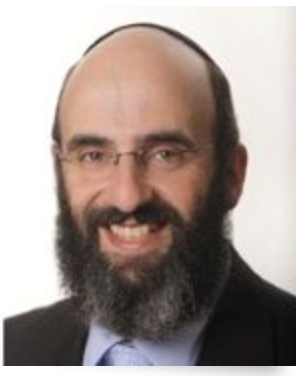Arthur Brown
 |
Professor & Associate Chair, Research BSc University of Calgary Office: Robarts Research Institute, Room 2290A Website: Dr. Brown's Homepage |
Why Science?
I always had an interest in figuring things out, and was extremely interested in biology. I pursued my BSc in the University of Calgary, where I earned a degree in molecular and cellular biology. I then transferred my degree to the University of Toronto. My first experience working in research was in an immunology lab at the University of Toronto, where I was given the freedom and the chance to develop as a young scientist. After this experience, I enrolled in the MD/PhD program at the University of Toronto. During my time there, I worked on my PhD with the supervision of Dr. Janet Rossant where I worked on a positional cloning project for a gene involved in sensory neuropathy in mice. After this experience, was sure that research was the career path of me. After my PhD, I moved to Montreal to continue on with the cloning research. After this, I moved to San Diego and worked at the Salk Institute where I studied how nerves find their targets in the embryo. Eventually, I came to Western and started my own lab.
Research Goals
The main goal at my lab is to try and identify and develop ways to improve recovery in the central nervous system from injury. We also look at designing ways to encourage nerves to grow around the blockage. We want to know if nerves can rewire around the blockage to improve recovery from injury. In my lab, we make use of cell culture to identify the various effects on targets. Molecular techniques are also used to determine the levels of various protein and RNA expression in the injured CNS. Behavioural studies of rats and mice and transgenic mice are also strategies we make use of to answer our research questions.
Specific Research Interests
- Regeneration and recovery of the CNS through neuroplasticity
- Anti-inflammatory strategies to control the environment of CNS injury.
- Concussion as a model of disease
Most Rewarding Moments
One of the most rewarding moments of my career thus far was when I was working on a transgenic mouse through microinjection. We had an accidental mutation that was a degeneration of sensory neurons that manifested in as a motor problem. Finding the mutated exon out of 100 00 base pairs was a huge eureka moment.
A second rewarding moment occurred when we showed that SOX9 conditional knockout mice have improved recovery after spinal cord injury. That demonstration was the culmination of an idea that was born from an in silico screen for transcription factors that might regulate the expression of nerve growth inhibiting genes begun about 8 years earlier. It also led to a drug discovery program for SOX9 inhibitors that continues on today.
List of Awards/grant support:
US DoD, Peer Reviewed Alzheimer’s Research Program (PRARP) 2020 - 2023
Principal Investigator (M. Prado co-PI)
Next-Generation Humanized Mice to Investigate How TBI Interacts With Genetic Risk Factors to Trigger Dementia
CIHR Project Grant 2019 - 2024
Principal Investigator
Evaluating inhibitors of CSPG synthesis in models of spinal cord injury
CIHR Project Grant 2016 - 2021
Co-investigator (principal Investigator, Dr. Dekaban)
Anti-CD11d immunotherapy for CNS trauma
CIHR Operating Grant 2014 - 2019
Principal Investigator
Investigating the role of SOX9 in recovery from spinal cord injury (sole PI, no other investigators)
Tri-agency Initiative, CIHR (Canadian Institutes of Health Research), NSERC (Natural Sciences and Engineering Research Council of Canada), SSHRC (Social Sciences and Humanities Research Council) - Human Frontiers in Research Fund 2019 - 2020
Co-investigator with C. Baron (PI), L. Saksida, R. Bartha
Microstructural Imaging in Concussion
Rick Hansen Institute - Operating Grant 2017 - 2018
Principal Investigator
Developing a Pipeline of Z02 Analogs for Spinal Cord Injury
Advice to Students
A piece of advice for students would be that sometimes it is more important to find a lab that you fit into and apply yourself, rather than looking for the perfect project. It is very important to enjoy the work.
Interests outside of academia
I try to go to the gym with my younger sons in my free time, as exercise is a great way to improve cognitive health! I also enjoy studying philosophy outside of the lab.
- Xu X., Cowan M., Beraldo F., Schranz A., McCunn P., Geremia N., Brown Z., Patel M., Nygard K.L., Khazaee R., Lihong L., Liu X., Strong M.J., Dekaban G.A., Menon R., Bartha R., Daley M., Mao H., Prado V.F., Prado M.A.M., Saksida L., Bussey T., Brown A. (2021). Repetitive mild traumatic brain injury in mice triggers a slowly developing cascade of long-term and persistent behavioral deficits and pathological changes. Acta Neuropathologica Communications, 9(1):60. PMID: 33823944.
- Hryciw, T., Geremia, N.M., Walker, M.A., Xu, X., and A. (2018). Anti-Chondroitin Sulfate Proteoglycan Strategies in Spinal Cord Injury: Temporal and Spatial Considerations Explain the Balance between Neuroplasticity and Neuroprotection. Journal of Neurotrauma, 35(16):1958-1969.
- Xu, K., Bass, B., McKillop, W.M., Mailloux, J., Liu, T., Geremia, N.M., Hryciw, T. and Brown A. (2018). Sox9 knockout mice have improved recovery and increased reparative sprouting following stroke. Experimental Neurology, 6(303):59-71. PMID: 29425963.
- Geremia, N.M., Hryciw, T., Bao, F., Streijger, F., Okon, E., Lee, J.H.T., Weaver, L., Dekaban,A., Kwon, B.K. and Brown A. (2017). The effectiveness of the anti-CD11d treatment is reduced in rat models of spinal cord injury that produce significant levels of intraspinal hemorrhage. Experimental Neurology, 295: 125-134. PMID: 28587875.
- McKillop, WM., York, E., Rubinger, L., Liu, T., Hryciw, T. Xu, K. and Brown, A. (2016). Conditional SOX9 ablation improves locomotor recovery after spinal cord injury by increasing reactive sprouting. Experimental Neurology, 283(Pt A):1-15. PMID: 27235933








